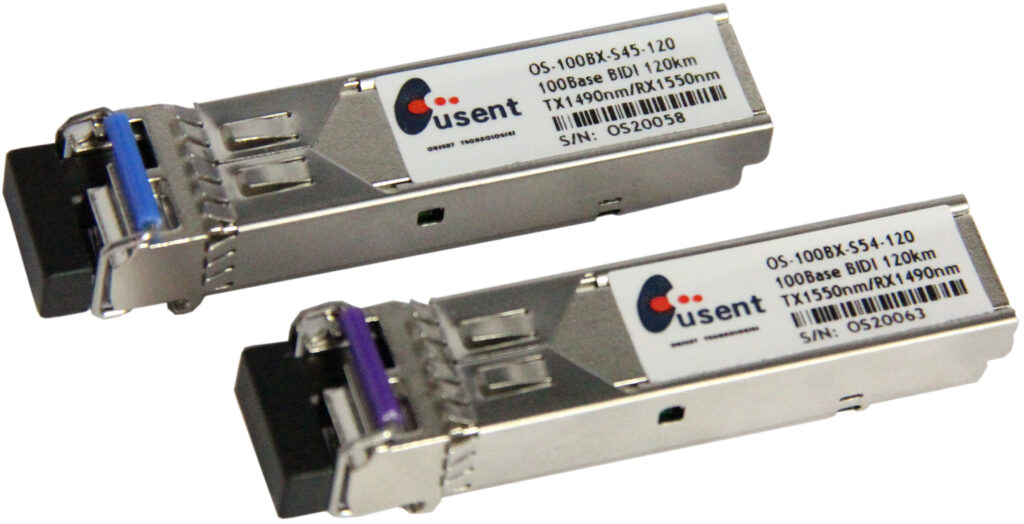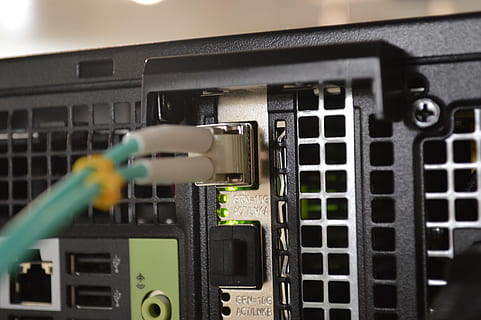

Transceiver
Many network cards, switches, and routers have a fixed interface type. It is common, for example, to have a switch with only RJ45 ports. The alternative is transceiver modules.
As far as networking is concerned, a transceiver is a small module that can be installed in these empty slots.
They are sometimes called SFPs or GBICs. However, these terms refer to the type of transceiver.
Why would we want to use these transceivers at all? Because they allow us to choose the type of interface we create.
We can have RJ45 modules, as well as fibre modules. We can have multi-mode fibre as well as single-mode fibre. In short, transceiver modules give us flexibility in the interface types that we use.
Transceiver modules usually have a part number that explains what it does. For example, SFP-1GE-LX.
- ‘SFP’ is the type of transceiver; Other types include SFP+ and QSFP
- ‘1GE’ is the speed, 1Gbps in this case
- ‘LX’ is the medium type; LX supports multi-mode fibre as well as short runs of single-mode fibre
Look at the manufacturer’s website to get more information about what each transceiver does.